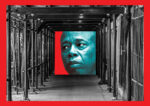They cover the distance from here to Cleveland — 400 miles of sidewalk sheds that force New Yorkers into musty, hunter green caves.
This unpleasant experience is the unintended consequence of strict rules around when a shed is needed for protection from crumbling facades, and of the single design that the building code dictates for almost all of them.
Eric Adams is the latest mayor to confront the problem, which for years has annoyed retail, office and residential tenants — and their landlords, who are often blamed for sheds that seem to stay up forever.
Adams has proposed a series of carrots and sticks — mostly sticks — to incentivize landlords to take sheds down faster.
He also wants them to look better while they’re up. To that end, the Department of Buildings is holding a shed design contest that will deliver alternatives to the hunter green eyesores. Submissions are due today.
For the plan to work, though, it has to make business sense to building owners.
“They can pass a law like in Camelot to say it won’t snow in the daytime,” said Kenneth Buettner, president of York Scaffold Equipment, a major shed supplier. “That’s really friendly, but how do you enforce that? How do you help make it happen? Come on.”
Urban Umbrella, the lone company allowed to make nice-looking sheds, knows a thing or two about design contests. It won a similar competition in 2010, earning a carve-out in the New York City building code and thus exclusive rights to the only legal sidewalk shed alternative.

Business owners say the standard green sheds deter pedestrians from walking by their storefronts, prevent consumers from even seeing the business, and sap their revenues. Urban Umbrella’s white design has a raised ceiling that keeps retail spaces in view.
The city’s contest will create up to six alternatives to the standard shed. As many as four would be for ground-level sheds and the others could be netting.
While winners will be paid, the Buildings Department will own the intellectual property on the designs and make them available to any company. This would theoretically produce a potpourri of shed styles that could be used instead of the drab green ones — ending Urban Umbrella’s monopoly on alternatives and giving building owners more choices.
This scenario, however, faces a number of headwinds.
First, the cost.
Urban Umbrella learned the hard way that not all landlords will pick design over bottom line. One landlord said its sheds can cost as much as 40 percent more.
While it’s common to see Urban Umbrella’s product in the ritzier parts of Manhattan — where high-end retailers depend on foot traffic — other landlords routinely pick the cheapest option. CEO Benjamin Krall pegs the company’s market share at only about 1 percent of the 9,000 sheds currently up.
Although the new alternatives will presumably be prettier than the 99 percent, they will face the same demand problem as Krall’s if they’re not price-competitive.
“If we were putting up a shed around a 45-story Plaza District office building, I would definitely use Urban Umbrella,” said David Koeppel of property owner Koeppel Rosen. “If we were putting a shed on a midblock building in Chelsea, I wouldn’t.”
Setting up a business to produce and install an alternative shed design is a long, complicated and costly endeavor. It took Urban Umbrella seven years to go from winning the contest to installing its first New York City shed, in 2018. Even if companies decide to build sheds with the new designs, Adams could be term-limited out of office before New Yorkers see them.

The Buildings Department says it will take into account production cost and labor when picking designs, giving preference to those easy to assemble and dismantle.
The mayor’s plan, dubbed Get Sheds Down, also aims to shrink the city’s sidewalk shed universe.
Sheds now stay up for an average of 500 days. Outliers jack up that number: At 409 Edgecombe Avenue in Harlem, a shed has been up for 17 years.
Leaving a shed up can cost less than fixing the facade problem that required it. The city’s remedy is to increase penalties and permit fees for sheds that stay up more than three months.
The mayor would shorten each shed permit to 90 days from a year, then impose fines as high as $6,000 per month. If work isn’t finished on a building within two years, a fine up to $10,000 could be levied.
But building owners say that repair work is rarely finished within 90 days. It’s not uncommon for it to take three years or more, particularly on older buildings where contractors might find additional things to fix only after they begin work.
Shed providers typically charge a flat fee for the first three months, then a monthly rent that runs considerably higher than the proposed monthly fine of $6,000. Some found the idea that the fines would spur shed removal to be laughable — and unfair, because the city mandates sheds in the first place.
When sheds stay up on an indefinite basis, it’s often because the building owner can’t afford the required repairs. The mayor’s new regime would increase the cost.
One Upper East Side building recently required $400,000 in repairs, said its lawyer, Stuart Saft of Holland and Knight. The job ended up costing $1 million because of fees and mandates from the city.
“I can sum this [plan] up with one word — idiocy,” Saft said. “There’s virtually no jobs that are going to take 90 days. Perhaps 90 days makes a great deal of sense in Oz, but we don’t have wizards in New York City.”
The city should take a longer look at costs before making mandates, he said.
A Department of Buildings spokesperson responded, “Our plan does not call for building façade repairs to be fully completed within 90 days. Our plan also specifically includes a waiver process for the monthly penalties if the façade repair work is completed and the shed is removed in a reasonable amount of time.”
Buildings commissioner James Oddo says the intent of shortening permits to 90 days isn’t just to speed up repairs, but to improve communication.
“The bottom line here is we want action,” Oddo said. “We want either the underlying work done or we want you to communicate with us to talk about where we are in the process.”
The mayor’s plan has carrots, too. It could trim the number of facade inspections, reducing the need for sheds. The Buildings Department also intends to review Local Law 11, which triggered the proliferation of sheds by mandating facade inspections every five years for buildings over six stories.
Koeppel agrees that cutting back on inspections would result in fewer sheds. The city should hire more inspectors, he said, noting that after repairs are done on a building, it can take the city two months to check the work and approve removal of a shed.
The financial penalties will be enforced in business districts first to give smaller landlords time to adjust. The plan also calls for the exploration of a loan program for those struggling to adjust to the new rules and to fix their facades.
“This is about creating new and better shed designs,” Oddo said. “This is about studying and updating the facade inspection requirements. This is about giving some financial assistance to those who truly need it and do the work that will eliminate sheds.”
This story has been updated with a comment from a Department of Buildings spokesperson.
Read more



